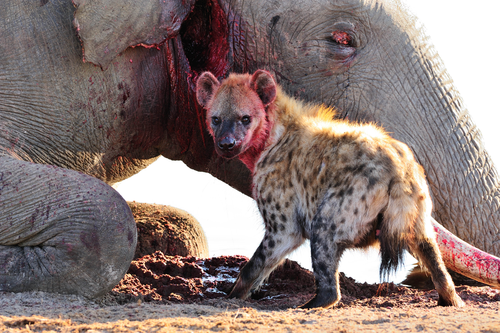
STRAUSS Eli
Recommendations: 0
Review: 1
Review: 1

Insights on the effect of mega-carcass abundance on the population dynamics of a facultative scavenger predator and its prey
Unveiling the influence of carrion pulses on predator-prey dynamics
Recommended by Esther Sebastián González based on reviews by Eli Strauss and 1 anonymous reviewerMost, if not all, predators consume carrion in some circumstances (Sebastián-Gonzalez et al. 2023). Consequently, significant fluctuations in carrion availability can impact predator-prey dynamics by altering the ratio of carrion to live prey in the predators' diet (Roth 2003). Changes in carrion availability may lead to reduced predation when carrion is more abundant (hypo-predation) and intensified predation if predator populations surge in response to carrion influxes but subsequently face scarcity (hyper-predation), (Moleón et al. 2014, Mellard et al. 2021). However, this relationship between predation and scavenging is often challenging because of the lack of empirical data.
In the study conducted by Sidous et al. (2024), they used a large database on the abundance of spotted hyenas and their prey in Zimbabwe and Multivariate Autoregressive State-Space Models to calculate hyena and prey population densities and trends over a 60-year span. The researchers took advantage of abrupt fluctuations in elephant carcass availability that produced alternating periods of high and low carrion availability related to changing management strategies (i.e., elephant culling and water supply).
Interestingly, their analyses reveal a coupling of predator and prey densities over time, but they do not detect an effect of carcass availability on predator and prey dynamics. However, the density of prey and hyena was partially driven by the different temporal periods, suggesting some subtle effects of carrion availability on population trends. While it is acknowledged that other variables likely impact the population dynamics of hyenas and their prey, this is the first attempt to understand the influence of carrion pulses on predator-prey interactions across an extensive temporal scale. I hope this helps to establish a new research line on the effect of large carrion pulses, as this is currently largely understudied, even though the occurrence of carrion pulses, such as mass mortality events, is expected to increase over time (Fey et al. 2015).
References
Courchamp, F. et al. 2000. Rabbits killing birds: modelling the hyperpredation process. J. Anim. Ecol. 69: 154-164.
https://doi.org/10.1046/j.1365-2656.2000.00383.x
Fey, S. B. et al. 2015. Recent shifts in the occurrence, cause, and magnitude of animal mass mortality events. PNAS 112: 1083-1088.
https://doi.org/10.1073/pnas.1414894112
Mellard, J. P. et al. 2021. Effect of scavenging on predation in a food web. Ecol. Evol. 11: 6742- 6765.
https://doi.org/10.1002/ece3.7525
Moleón, M. et al. 2014. Inter-specific interactions linking predation and scavenging in terrestrial vertebrate assemblages. Biol. Rev. Camb. Philos. Soc. 89: 1042-1054.
https://doi.org/10.1111/brv.12097
Roth, J. 2003. Variability in marine resources affects arctic fox population dynamics. J. Anim. Ecol. 72: 668-676.
https://doi.org/10.1046/j.1365-2656.2003.00739.x
Sebastián-González, E. et al. 2023. The underestimated role of carrion in diet studies. Global Ecol. Biogeogr. 32: 1302-1310.
https://doi.org/10.1111/geb.13707
Sidous, M. et al. 2024. Insights on the effect of mega-carcass abundance on 1 the population dynamics of a facultative scavenger predator and its prey. bioRxiv, ver. 2 peer-reviewed and recommended by PCI Ecology.
https://doi.org/10.1101/2023.11.08.566247